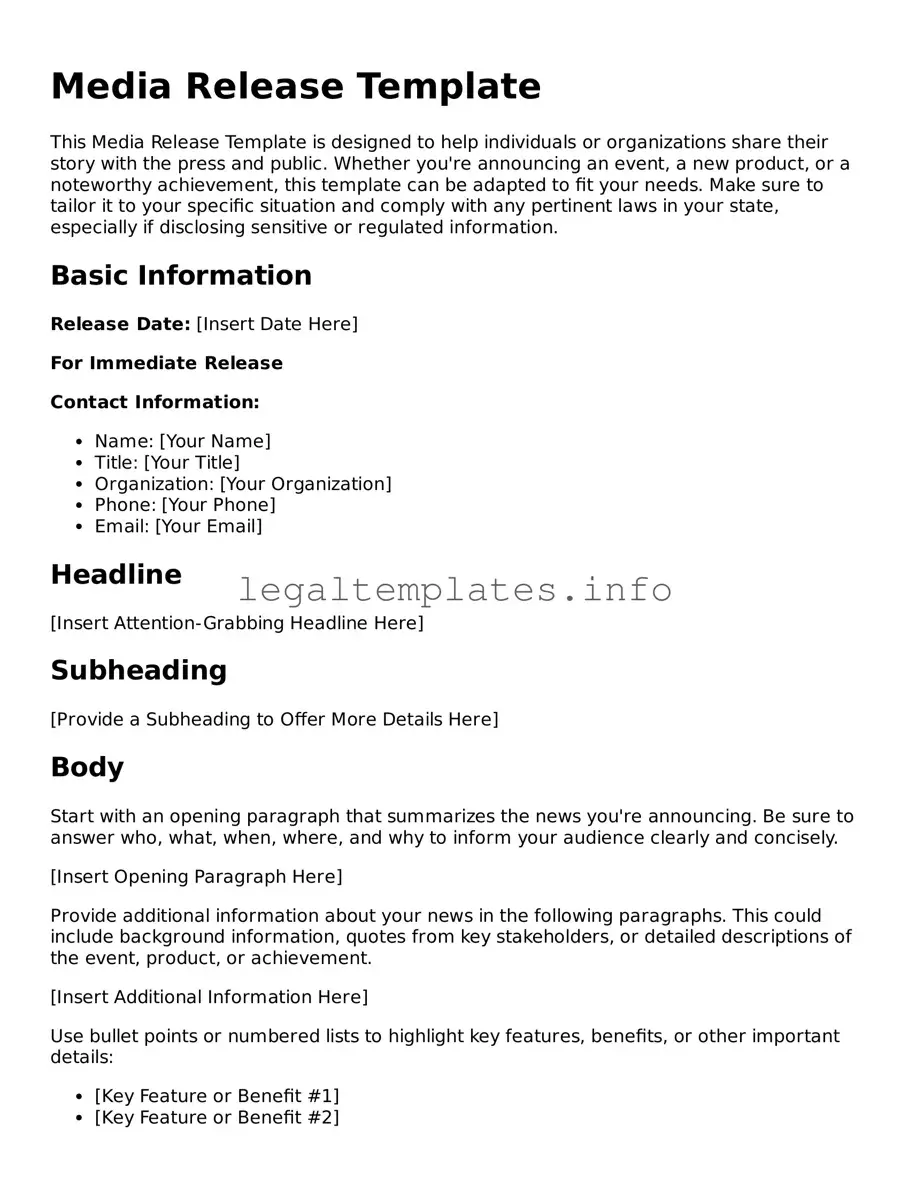Media Release Template
This Media Release Template is designed to help individuals or organizations share their story with the press and public. Whether you're announcing an event, a new product, or a noteworthy achievement, this template can be adapted to fit your needs. Make sure to tailor it to your specific situation and comply with any pertinent laws in your state, especially if disclosing sensitive or regulated information.
Basic Information
Release Date: [Insert Date Here]
For Immediate Release
Contact Information:
- Name: [Your Name]
- Title: [Your Title]
- Organization: [Your Organization]
- Phone: [Your Phone]
- Email: [Your Email]
Headline
[Insert Attention-Grabbing Headline Here]
Subheading
[Provide a Subheading to Offer More Details Here]
Body
Start with an opening paragraph that summarizes the news you're announcing. Be sure to answer who, what, when, where, and why to inform your audience clearly and concisely.
[Insert Opening Paragraph Here]
Provide additional information about your news in the following paragraphs. This could include background information, quotes from key stakeholders, or detailed descriptions of the event, product, or achievement.
[Insert Additional Information Here]
Use bullet points or numbered lists to highlight key features, benefits, or other important details:
- [Key Feature or Benefit #1]
- [Key Feature or Benefit #2]
- [Key Feature or Benefit #3]
Or
- [Important Detail #1]
- [Important Detail #2]
- [Important Detail #3]
Boilerplate
Conclude your media release with a boilerplate—a short paragraph that describes your organization, providing context about who you are and what you do.
[Insert Boilerplate Here]
End With a Call to Action
Encourage your readers to take action. This could be visiting your website, joining an event, or contacting your organization for more information.
[Insert Call to Action Here]
Note: If your release is specific to certain states and involves regulated information or activities, ensure compliance with relevant state laws. For example, if you're based in California and your release includes customer testimonials, you'll need to consider the California Consumer Privacy Act (CCPA).
